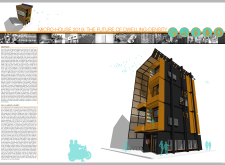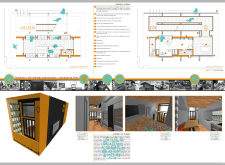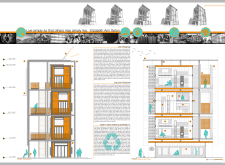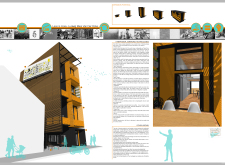5 key facts about this project
The design responds to the urgent issue of urban migration, situated in an urban environment where increasing population density poses significant challenges to housing. With more people flocking to cities, there is a pressing need for innovative living solutions. The focus is on creating smaller, multifunctional dwellings that efficiently use space while preserving communal areas. The overall concept aims to reshape traditional housing models to meet the realities of modern urban life.
Concept and Functionality
The approach centers on the idea of compact homes that enhance spatial efficiency and promote sustainable living. By adopting a rightsizing philosophy regarding human habitation, the design encourages the use of technology and careful space planning. This balance aims to improve living conditions while ensuring that homes are well integrated with urban activities, allowing for smooth transitions between daily tasks and leisure.
Spatial Organization
The arrangement of residential units plays a crucial role in the design. It encourages vertical integration of living spaces, work areas, and agricultural components. This setup maximizes land use in congested urban centers. Open layouts are designed to bring in natural light and air, creating a lively connection to the outside world that is often absent in typical housing designs.
Community Integration
A strong emphasis is placed on fostering a sense of community. Shared spaces and facilities are thoughtfully arranged to promote social interaction among residents. This is particularly relevant for single-person households and smaller families, who represent an increasing portion of urban demographics. By prioritizing community dynamics, the design aims to cultivate a more connected and supportive living environment.
Sustainability and Resilience
Specific materials are not detailed in the design narrative, but there is a clear commitment to eco-friendliness and sustainability. This reflects an intention to lessen the overall environmental impact of urban living. The proposed integration of energy production and water recycling systems within the homes highlights a vision of self-reliance. Homes are designed to harness natural resources, contributing to a resilient urban ecosystem that can adapt to future challenges.
At the core of the design is an important feature: the incorporation of agricultural components within the living areas. This creates a network of urban farming that supports both self-sufficiency and community interaction. This detail enhances daily life while reinforcing the broader theme of sustainable urban living.






















































